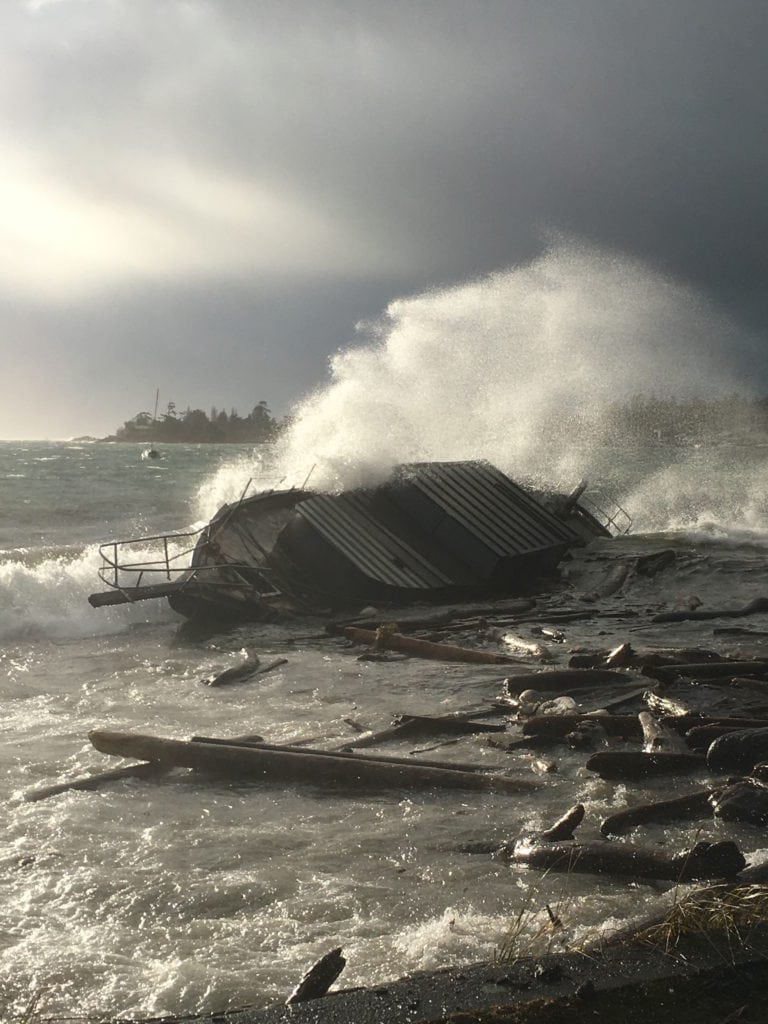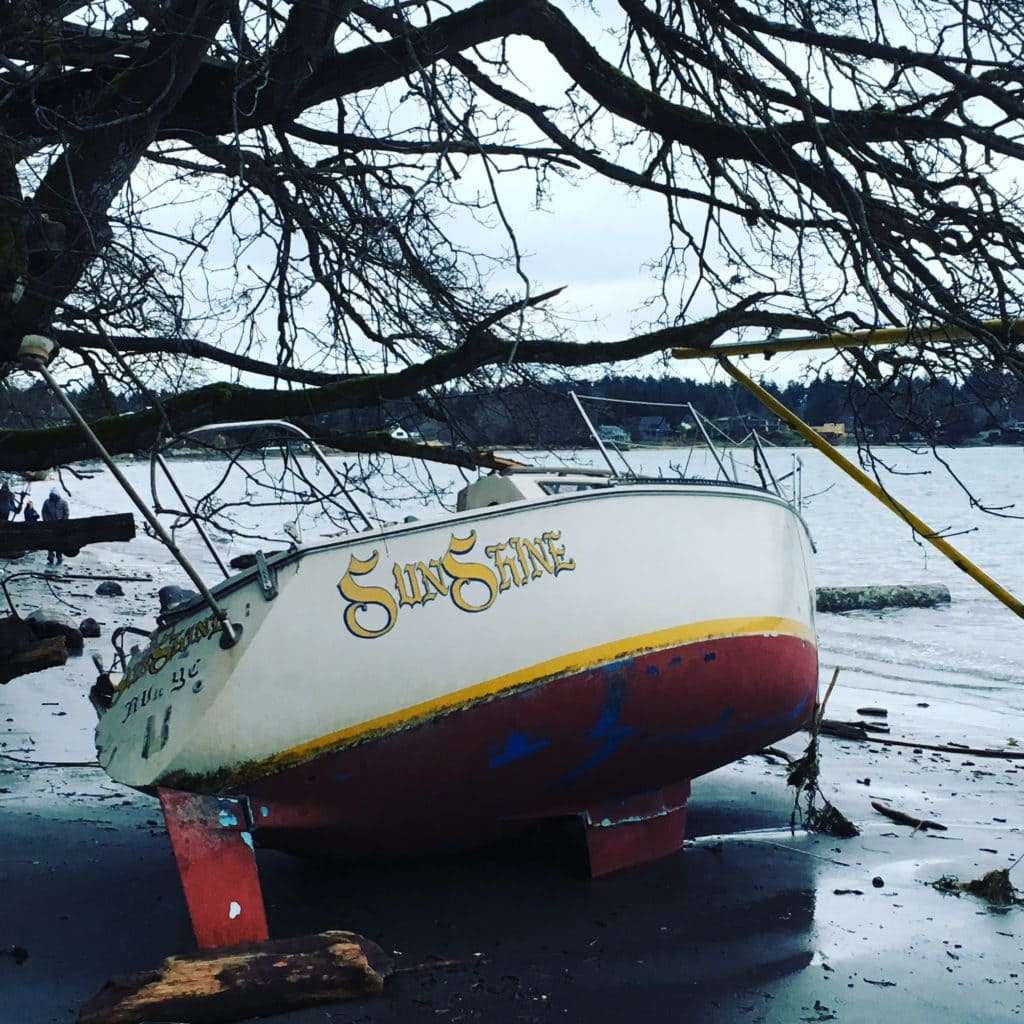Keeping Your Boat and Crew Safe While Cruising BC’s West Coast
We enjoy cruising British Columbia’s West Coast on our sailboat Tula. We sail the Coast during most seasons of the year.
Our wonderful cruising-grounds extend from the bottom of Puget Sound up the Salish Sea to Canada’s border with Alaska.
During our sailing courses, we continually stress to our students that anything can happen on the ocean and that they must always be prepared for any unexpected event. Critical for us are cruising safely and ensuring we protect our boat and all on board. We want to be cruising on Tula for many, many more years.

What is the ‘Pineapple Express’?
In November each year, we normally see the arrival of the first ‘Pineapple Express’ and another BC coastal storm season.
Each ‘Express’ is one of a string of deep, tropical low-pressure systems marching across the NE Pacific from Hawaii towards the BC and Alaskan coast. When those moisture-laden, anti-clockwise lows arrive off the coast, they are characterized by strong gusting winds, driving torrential rain, plummeting barometric pressure and occasional periods of sun in between lows.
In early December, in the middle of a major storm, we noticed our home barometer had descended briefly to 972 hPa; that is the lowest that we had seen for many years!
After crossing BC, the Express will often dump heavy snow in the Rocky Mountains and then head for the Prairies where it often moderates into typical Chinook conditions. By late March, the ‘Express’ season is normally over, although coastal winds can be gale-force at any time of the year.
Impact on Our Coastal Cruising Trips
Coastal cruising sailors do not want to run the risk of being run down by the ‘Express’. The powerful winds can drive a boat onto shore or into other vessels. No sailor needs that. It is better to be at home by the fire with a cocktail if a big blow is forecast.
However, if we are out on the water on Tula and the weather gets nastier than forecast, there are four main tools we use to cope with an Express:
- Sheltered Anchorage: Before things get too hairy, we will have already planned to head to other closer or more sheltered anchorages. As the low passes overhead, NE and SE winds can be expected in the Victoria/Gulf Islands area. An anchorage may initially appear to be a good choice for shelter. However, a sudden change in wind direction can mean a hasty revision to Plan B. Super-powered, descending katabatic winds in the lee of steep islands can also be a danger.
- Ground Tackle: On Tula we have oversized ground tackle, including our anchor, heavy anchor chain and chain weights called kellets. Due to this increased weight in the bow, Tula will never win a sailboat race, but we do sleep well at anchor most nights.
- Weather and wind forecasts: We closely monitor forecasts such as Environment Canada reports, watch our three on-board barometers, and when in cell range, both our favourite wind apps and NOAA weather prediction charts. Technology is a great help to sailors, but blind reliance on it can be dangerous. That plummeting barometer still sends this sailor’s antennae into hyper-alert mode.
- Drag Alarms: At night, we sometimes will set the drag alarms on both our Garmin GPS primary and handheld chart-plotters. If Tula drags her anchor and moves outside our defined 100 foot radius, then audible alarms will sound.

The Wrecks of the Pacific Sun King, the Sun Shine and others…
On December 5, 2015 a major SE storm hit the Pacific NW. Several sailboat owners who did not understand the power of these storms anchored their boats in the funnel-like Cadboro Bay near Victoria. They chose to inexpensively anchor out over being moored in a safe marina.
Their boats were driven hard on to the shore. Eight weeks later, the remains of those now-derelict vessels are still littering the beach. One owner of a 40-ton, 50 foot ferro-cement sailboat apparently chose to use an anchor made out of a bundle of rebar.
His former home is now destroyed, and he and his crew almost lost their lives. The local municipality is trying to figure out how to remove the remnants of this heavy concrete boat from the middle of a very public and popular beach
